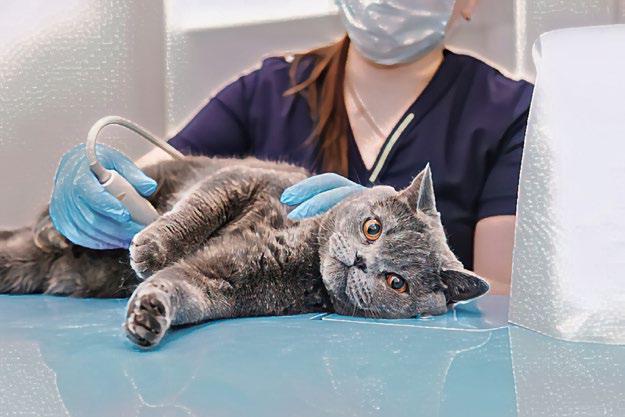
You worry about your girl, you kiss your planned vacation goodbye to cover the expected C-section bill, you pray for a couple of surviving kittens to help offset that bill. . . but in the middle of all of this, we are willing to bet that you’re also asking yourself: “Could I have done something to prevent this?”
You probably won’t like our answer, because it is “very possibly, yes.”
There are definitely several things that breeders can do to help reduce the incidence of emergency C-sections. Unfortunately, the time to put them into practice starts long before you find yourself heading to the ER. Additionally, they take up your time and cost money, two commodities that tend to be in short supply when you are managing a breeding program with multiple females. Finally, sometimes the way to reduce the likelihood of an emergency C-section is to arrange for a scheduled C-section; still an expensive proposition, but typically $500 to $1,000 less than emergency surgery, and in our opinion, a very worthwhile alternative.
Given the disclaimer that we cannot offer you a “magic bullet,” we still believe our recommendations are worth your perusal.
Count the Days. . . Every Day Counts!
First of all, we are not expecting breeders to follow this exact protocol with every single breeding and recognize that it may very well be too costly and/or time-consuming. Three vet appointments, in particular, may be more than your budget can handle. But for firsttime moms or for queens that have had prior birthing problems, it makes sense to consider this approach.
هذه القصة مأخوذة من طبعة February 2024 من Cat Talk.
ابدأ النسخة التجريبية المجانية من Magzter GOLD لمدة 7 أيام للوصول إلى آلاف القصص المتميزة المنسقة وأكثر من 9,000 مجلة وصحيفة.
بالفعل مشترك ? تسجيل الدخول
هذه القصة مأخوذة من طبعة February 2024 من Cat Talk.
ابدأ النسخة التجريبية المجانية من Magzter GOLD لمدة 7 أيام للوصول إلى آلاف القصص المتميزة المنسقة وأكثر من 9,000 مجلة وصحيفة.
بالفعل مشترك? تسجيل الدخول

Life With Patrick
Patrick and Mount Doom

Feline Photographers Part 1
\"Cats never strike a pose that isn't photogenic.\" - Lillian Jackson Braun

The Cat Fancy Alphabet
\"The Cat Fancy Alphabet\" is a new feature in Cat Talk. It highlights various terms and aspects of the cat fancy, educating fanciers new and old about our hobby.

UP CLOSE AND Purr-sonal
If there is one person, or even just a name, that anyone in CFA (Cat Fancier Association) knows, it would have to be Allene Tartaglia. It might be from her involvement with most aspects of the operations of CFA in her position of executive director. Or perhaps from her deep involvement with both the CFA Annual meeting and/or the International Show. Cat Talk thought it was time to learn more about one of the most key people in CFA.

Vision and Hearing Dysfunctions in Senior Cats
Just as people are challenged by having deficiencies with vision and hearing over time, so are senior cats. In senior cats, pet owners may notice their cats are no longer responding to them in the same way; however, it may be difficult to figure out.

Senior Cats and House Soiling
Why is my cat no longer using its litter box? Cat soiling in the house is one of the most talked about issues for pet owners.

Nutrition for Our Senior Cats
From the time they are born, our kittens receive a tremendous amount of care, with diet being at the core of their growth and development.

Fluffy's Sixteen and STILL Plays Like a Kitten!
Enrichment for Senior Cats

Alternative Arthritis Treatments for Cats
Just like humans, cats can experience arthritis. About 90% of cats over the age of 10 years experience osteoarthritis (OA) in at least one joint.1 It is a complex condition involving inflammation and degeneration of one or more joints and is sometimes referred to as degenerative joint disease (DJD). Cats with OA experience pain and inflammation in various joints that interfere with daily activities.

Checklist For What to Look For in Your Club's Next Show Venue
Show Manager To Ring One, Please